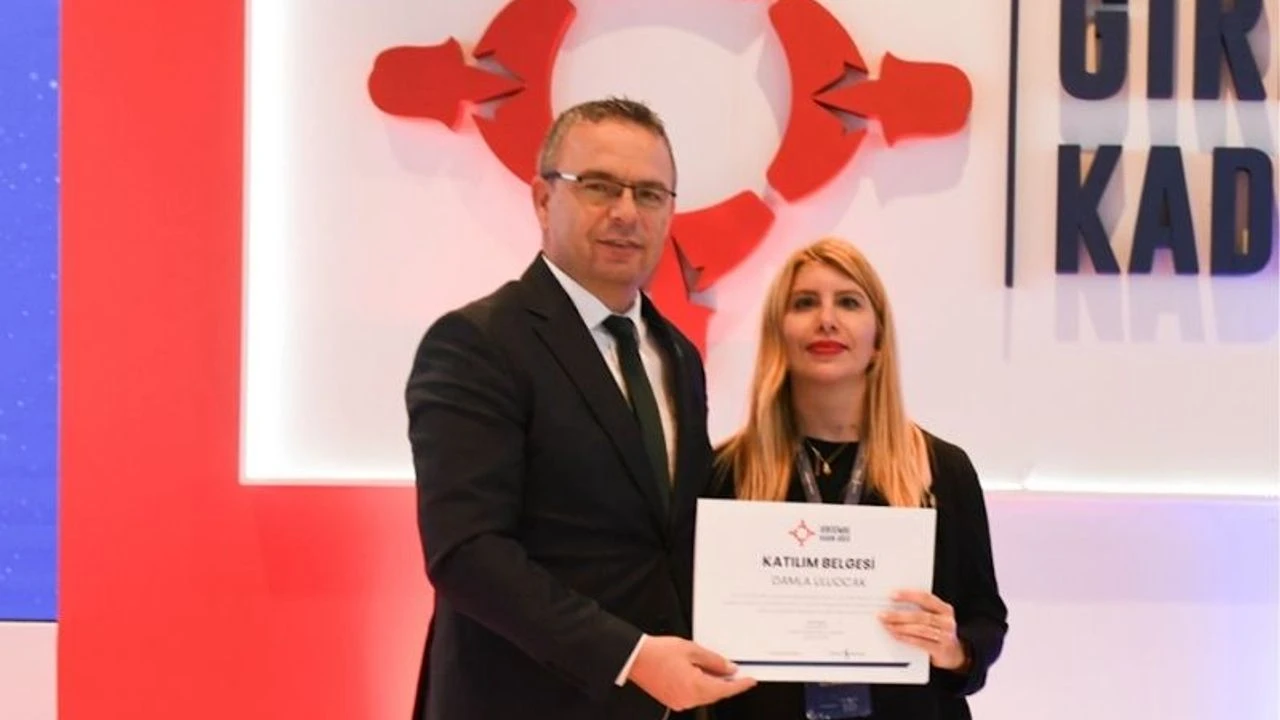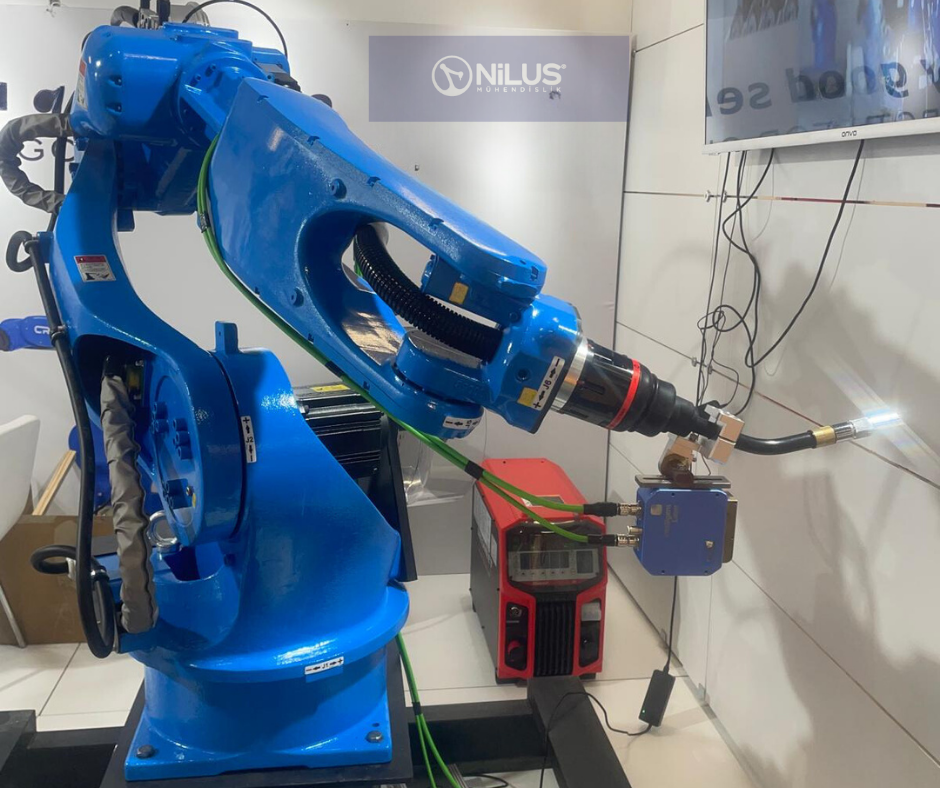Hello welcome!
With the advancement of technology day by day, there are constant changes in production. One of these changes is the widespread use of welding robots.
In this blog post, we start by examining in detail what arc welding robots are, how they work, their usage areas and advantages.
If you are ready, let’s take a step together with this technological development that revolutionizes production!
What are Arc Welding Robots?
Arc welding robots are industrial robots that perform the arc welding process automatically. These robots have a mechanical structure consisting of arms and attachments. The welding torch located at the end of the arm operates with electric current and melts the metals thanks to the arc. Arc welding robots are programmed with computerized control systems and combine the desired welding seams precisely.
Working Principle of Arc Welding Robots:
Arc welding robots work according to a predetermined program. This program contains information such as the geometry of the part to be welded, the type of weld seam and welding parameters. The robot creates the desired weld seam by moving its arm and welding torch according to the information in the program. The heat and smoke generated during the arc welding process are removed from the robot arm, ensuring the safety of the working environment.
FEATURES THAT AN ARC WELDING ROBOT MUST HAVE
Robot FeaturesThe movement speeds required for arc welding are relatively low and the weight of the welding gun is not large; Therefore, electrically driven robots are generally preferred for arc welding. If heavy welding guns with water cooling systems are used, hydraulic robots may be preferred. Articulated robots are preferred for arc welding of small parts where the distance traveled during idle operation is large. These types of robots have the ability to perform sensitive movements and their design is suitable for immovable parts, and linear robots are preferred in many arc welding applications. Linear robots move slower and their orbits can be obtained more easily than articulated robots. Interpolation is required to simplify accurate control of nonlinear weld seams.
Number of Axes
Most robot models have six rotating joints. Arc welding robots usually have five or six axes, and some may have seven or eight axes. Two welding robots working simultaneously The complete robotic workstation in which it is located can have up to fifteen coordinated axes of motion in a row with external axes. If there are more than six degrees of freedom, a point in space can be approached from several directions. Such flexibility is very important in arc welding applications, and this importance manifests itself in cases where the effect of gravity is effective in shaping the molten weld pool.
Completeness and Reproducibility
The accuracy with which the robot approaches a point in space is called completeness. Completeness is required in robots where control programs are developed digitally. Robots that are “taught” programs do not need to be as tar as others. Because their movements depend on remembering the points taught and repeating them. Repeatability refers to the robot’s ability to repeatedly navigate to a point in space. .Arc welding robots must have repeatability; However, in cases where the robot’s trajectory is taught, completeness is no longer mandatory.
Process Control
The industrial robot must have the ability to control the arc welding process. At a minimum, the robot must be able to turn the shielding gas on and off, start and stop the welding policy, and select programmed welding conditions. Some robots control the welding process by selecting current values. More complex robots can directly control the wire feeder, power supply and fraction and create process conditions as part of the robot program. Additionally, welding process variables must be programmed separately from the robot program (1).
Components of Arc Welding Robots
Arc welding robots are systems with a complex structure. Its main components are:
Mechanical Arm: It is the mechanical arm that acts as the backbone of the robot. It is moved by motors and joints.
Welding Torch:It is a welding torch that melts metals by creating an arc with electric current.
Control System:It is a computerized system that controls the robot’s movements and welding parameters.
Programming Software:It is the software that enables the programming of the robot.
Sensors:These are sensors that enable the robot to detect its environment and determine its location.
Power source:
The source that provides the electrical power required for the operation of the robot.
Advantages of Arc Welding Robots
The use of arc welding robots provides many advantages in production. Some of these advantages are:
Increased Productivity:Arc welding robots can weld much faster and more consistently than manual welding methods. In this way, a significant increase in efficiency in production can be achieved.
Improved Quality:Arc welding robots can create precise and repeatable weld seams. In this way, a significant increase in product quality can be achieved.
Reduced Error Rate:Arc welding robots minimize the risk of human error. In this way, faulty products are prevented from leaving production. Increased Safety: Arc welding robots ensure the safety of the working environment by keeping people away from dangerous welding fumes and heat
Low Labor Cost:Arc welding robots help reduce labor costs in the long run.
Less On-Field Fatigue:Manual welding methods can be quite tiring for workers. Arc welding robots automate this load, making workers less tired. Less Work Accidents:Arc welding robots reduce the risk of occupational accidents by automating the hazardous welding process.
Cleaner Working Environment:Arc welding robots make the working environment cleaner by automatically evacuating welding fumes and dust.
Flexibility:Arc welding robots can be used with different welding types and materials.
Remote access:Arc welding robots can be controlled via remote access. In this way, welding can be done even in hazardous environments.
Conclusion
Arc welding robots are advanced technological systems that revolutionize production and are used in many sectors. Although the initial investment cost is high, it compensates for this disadvantage with the productivity increase and cost savings it will provide in the long term. The use of arc welding robots increases quality, safety and flexibility in production. In the future, arc welding robots are expected to become more widespread and more advanced.






